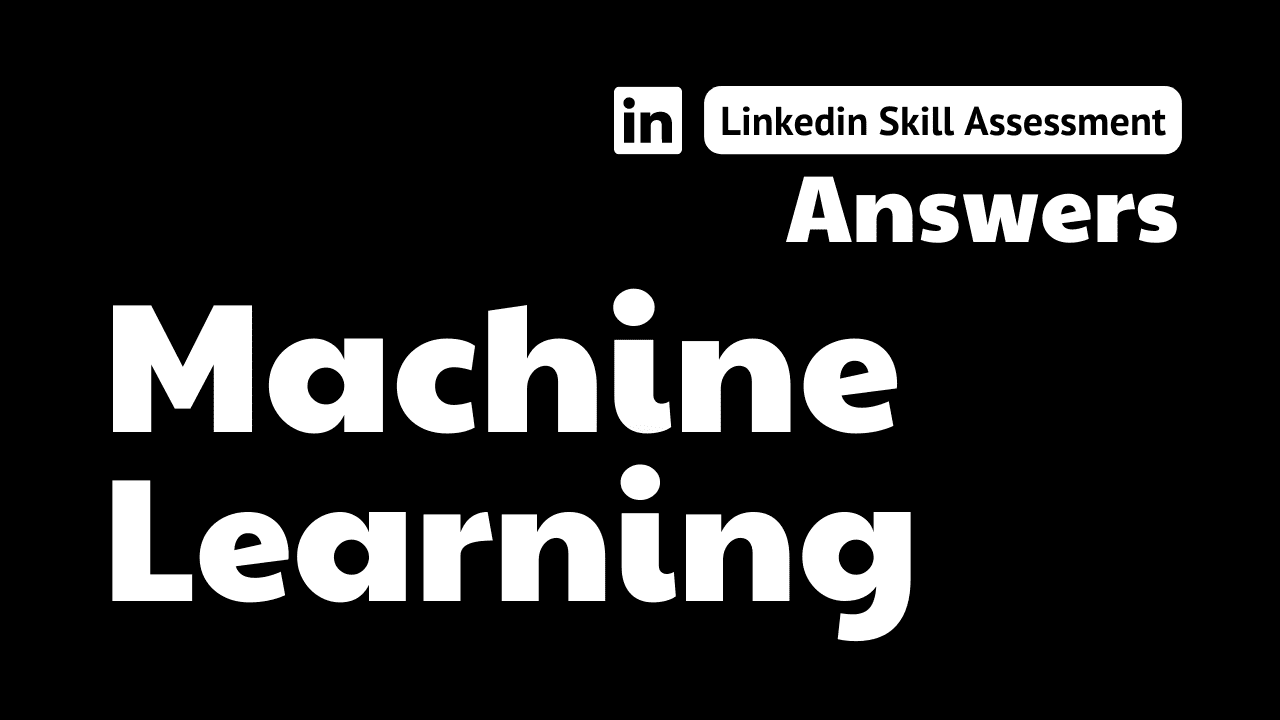
machine learning linkedin assessment answers
1. You create a decision tree to show whether someone decides to go to the beach. There are three factors in this decision: rainy, overcast, and sunny. What are these three factors called?
- deciders
- predictors
- tree nodes
- root nodes
2. What is ensemble modeling?
- when you create an ensemble of different servers to run the algorithms
- when you create an ensemble of your training and test data set
- when you find the one best algorithm for your ensemble
- when you use several ensembles of machine learning algorithms
3. You are part of a data science team that is working for a national fast- food chain. You create a simple report that shows a trend: Customers who visit the store more often and buy smaller meals spend more than customers who visit less frequently and buy larger meals. What is the most likely diagram that your team created?
- multiclass classification diagram
- pivot table
- linear regression and scatter plots
- K-means cluster diagram
4. You need to quickly label thousands of images to train a model. What should you do?
- Set up a cluster of machines to label the images.
- Create a subset of the images and label them yourself.
- Use naive Bayes to automatically generate labels.
- Hire people to manually label the images.
5. Your data science team is often criticized for creating reports that are boring or too obvious. What could you do to help improve the team?
- Suggest that the team is probably underfitting the model to the data.
- Suggest that unsupervised learning will lead to more interesting results.
- Make sure that they are picking the correct machine learning
algorithms. - Encourage the team to ask more interesting questions.
6. In statistics, what is defined as the probability of a hypothesis test of finding an effect-if there is an effect to be found?
- alpha
- significance
- confidence
- power
7. Naive Baves looks at each _____ predictor and creates a probability that belongs in each class.
- binary
- multiclass
- conditional
- independent
8. What does it mean to underfit our data model?
- Your model has low bias but high variance.
- There is not a lot of variance but there is a high bias.
- There is too little data in your training set.
- There is too much data in your training set.
9. You work for a website that helps match people up for lunch dates. The website boasts that it uses more than 500 predictors to find customers the perfect date, but many customers complain that they get very few matches. What is a likely problem with your data model?
- You are underfitting the model to the data.
- You are overfitting the model to the data
- Your training set is too large.
- Your machine is creating inaccurate clusters.
10. You are working with your machine learning algorithm on something called class predictor probability. What algorithm are you most likely using?
- multiclass binary classification
- unsupervised classification
- decision tree analysis
- naive Bayes
11. Your machine learning system is using labeled examples to try to predict future data, compare that data to the predicted result, and then update the model. What is the best description of this machine learning method?
- unsupervised learning
- semi-reinforcement learning
- semi-supervised learning
- supervised learning
12. You want to create a machine learning algorithm that finds the top 100 people who have shared photographs of themselves on social media. What is the best machine learning method to use?
- reinforcement learning
- unsupervised learning
- binary classification
- K-nearest neighbor
13. The famous data scientist Andrew Ng has been quoted as saying "Applied machine learning is basically feature engineering." What is feature engineering?
- scraping new features from web data
- designing innovative new user features to add to software
- creating new variables by combining and modifying the original variables
- using deep learning to find features in the data
14. K-means clustering is what type of machine learning algorithm?
- reinforcement
- classification
- unsupervised
- supervised
15. Which statement about K-means clustering is true?
- In K-means clustering, the initial centroids are sometimes randomly selected.
- To be accurate, you want your centroids outside of the cluster.
- The number of clusters are always randomly selected.
- K-means clustering is often used in supervised machine learning.




